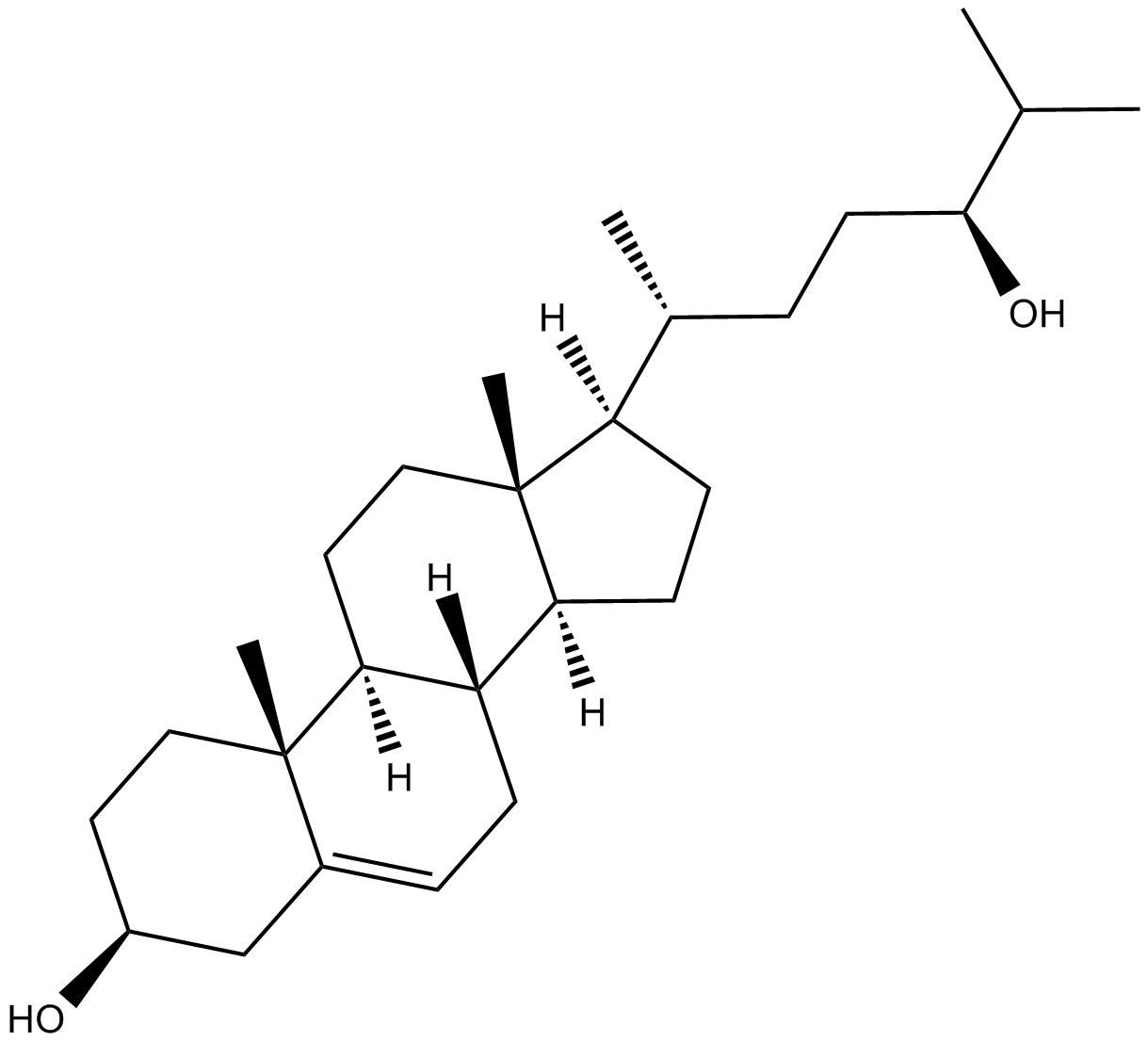24(S)-hydroxy Cholesterol (Synonyms: Cerebrosterol) |
| Catalog No.GC18076 |
LXRα and LXRβ nuclear receptors activator
Products are for research use only. Not for human use. We do not sell to patients.

Cas No.: 474-73-7
Sample solution is provided at 25 µL, 10mM.
24S-hydroxycholesterol (24S-OH-Chol) is an enzymatically oxidized product of cholesterol mainly synthesized in the brain, involved in the pathogenesis of Alzheimer disease (AD) [1].
24(S)-hydroxy Cholesterol has been generated by the action of enzyme cholesterol 24(S)-hydroxylase (CYP46) on cholesterol in the brain. 24(S)-hydroxy Cholesterol can diffuse across the blood-brain barrier to the systemic circulation where it modulates cell signaling, which could be used for further sterol biosynthesis, or be metabolized in the liver. In brain, disturbances of cholesterol homeostasis have been associated with severe neurological diseases and play a dominant role in the development of Alzheimer disease (AD).
In AD patients, the levels of 24(S)-hydroxycholesterol have been increased in cerebrospinal fluid [1]. 24(S)-hydroxycholesterol is able to induce the expression of ABCA1, ABCG1, and apoE in astrocytes and to elevate apoE-mediated cholesterol efflux in astrocytoma but not in neuroblastoma cells [1]. The concentration of 24(S)-hydroxycholesterol in AD and non-Alzheimer demented patients was modestly but significantly higher than in healthy volunteers and in depressed patients. Plasma 24(S)-hydroxycholesterol levels negatively correlated with the severity of dementia. 24(S)-hydroxycholesterol plasma levels may potentially be used as an early biochemical marker for an altered cholesterol homeostasis in the central nervous system [2]. 24(S)-hydroxycholesterol is a natural ligand of the liver X receptors (LXR), central players in the regulation of cholesterol metabolism. 24(S)-hydroxycholesterol potently activated LXRα and LXRβ nuclear receptors with the EC50 values of 4 and 3 μM, respectively, causing upregulation of cholesterol-lowering genes.
References:
[1] Abildayeva K, Jansen P J, Hirsch-Reinshagen V, et al. 24 (S)-hydroxycholesterol participates in a liver X receptor-controlled pathway in astrocytes that regulates apolipoprotein E-mediated cholesterol efflux[J]. Journal of Biological Chemistry, 2006, 281(18): 12799-12808.
[2] Lütjohann D, Papassotiropoulos A, Bjrkhem I, et al. Plasma 24S-hydroxycholesterol (cerebrosterol) is increased in Alzheimer and vascular demented patients[J]. Journal of Lipid Research, 2000, 41(2): 195-198.
[3] Janowski, B. A.,Grogan, M.J.,Jones, S.A., et al. Structural requirements of ligands for the oxysterol liver X receptors LXRα and LXRβ. Proceedings of the National Academy of Sciences of the United States of America 96(1), 266-271 (1999).
Average Rating: 5 (Based on Reviews and 22 reference(s) in Google Scholar.)
GLPBIO products are for RESEARCH USE ONLY. Please make sure your review or question is research based.
Required fields are marked with *




















